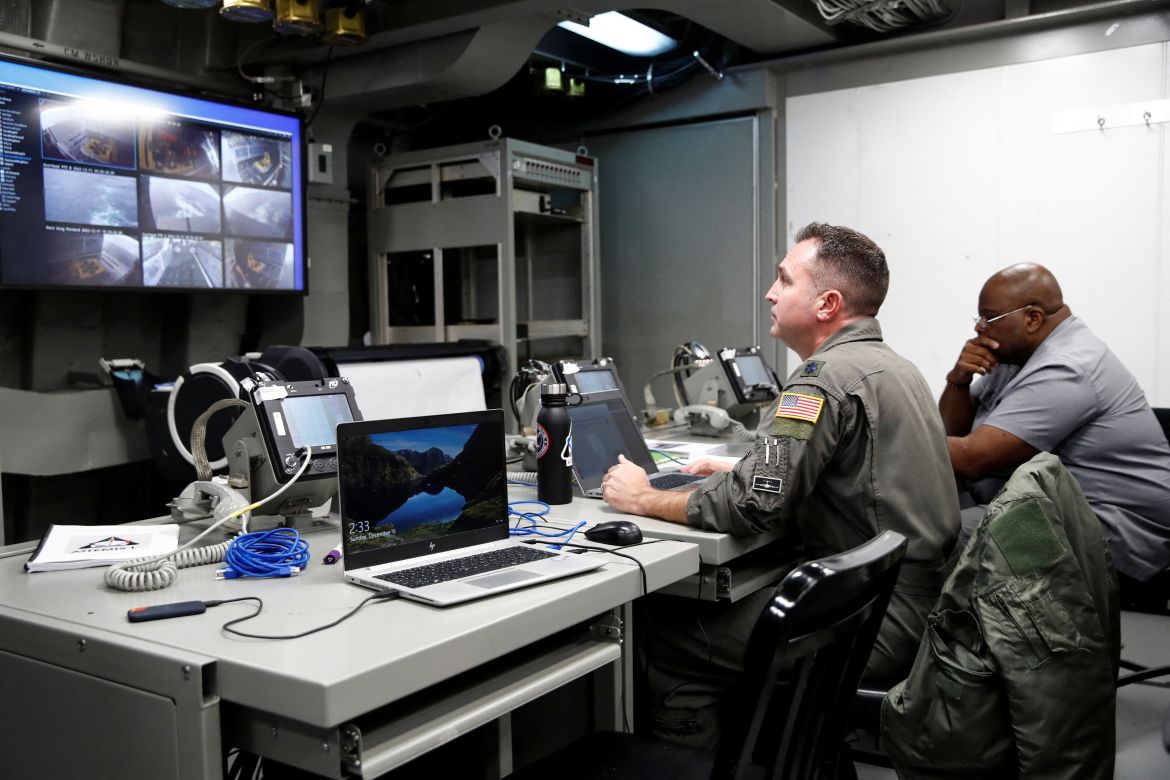In Pictures
Photos: NASA’s Orion capsule visits moon, returns earthward
The splashdown ends a 25-day mission less than a week after the capsule passed about 127km above the Moon.

NASA’s Orion capsule barrelled through Earth’s atmosphere and splashed down in the Pacific Ocean on Sunday after making an uncrewed voyage around the moon, winding up the inaugural mission of the United States agency’s new Artemis lunar programme 50 years to the day after Apollo’s final moon landing.
The gumdrop-shaped Orion capsule, carrying a simulated crew of three mannequins wired with sensors, plunked down in the ocean at 9:40am Pacific Standard Time (17:40 GMT) off Mexico’s Baja California peninsula, demonstrating a high-stakes homecoming before NASA flies its first crew of Artemis astronauts around the moon in the next few years.
A US military helicopter and a group of fast boats approached the capsule after splashdown for about five hours of inspections before Orion was hoisted on board a US Naval vessel for a trip to San Diego, California.
The splashdown capped a 25-day mission less than a week after the capsule passed about 127km (79 miles) above the moon in a lunar fly-by, and came about two weeks after it reached its farthest point in space, nearly 434,500km (270,000 miles) from Earth.
Roughly 30 minutes before splashing down, the capsule committed to a fiery, 20-minute plunge into Earth’s atmosphere when it shed its service module in space, exposing a heat shield that reached peak temperatures of nearly 2,760 degrees Celsius (5,000 degrees Fahrenheit) during its blazing-fast descent.
Atmospheric friction slowed the capsule from nearly 40,000 to 500 kilometres per hour (24,500 to 325 miles per hour), followed by two sets of parachutes that helped brake its speed to an expected 32km/h (20mph) at splashdown. The capsule showed a “perfect” descent rate, NASA commentator Rob Navias said.
“This has been an extraordinarily successful mission,” NASA Administrator Bill Nelson told reporters.
The capsule blasted off on November 16 from the Kennedy Space Center at Cape Canaveral, Florida, atop NASA’s towering next-generation Space Launch System, now the world’s most powerful rocket and the biggest NASA has built since the Saturn V of the Apollo era.
Compared with Apollo, born of the Cold War-era US-Soviet space race, Artemis is more science-driven and broad-based, enlisting other countries and commercial partners such as Elon Musk’s SpaceX and the space agencies of Europe, Canada and Japan.
“This is a great day not only for America, but it’s a great day for all of our international partners – that’s the difference from 50 years ago,” Nelson said.











